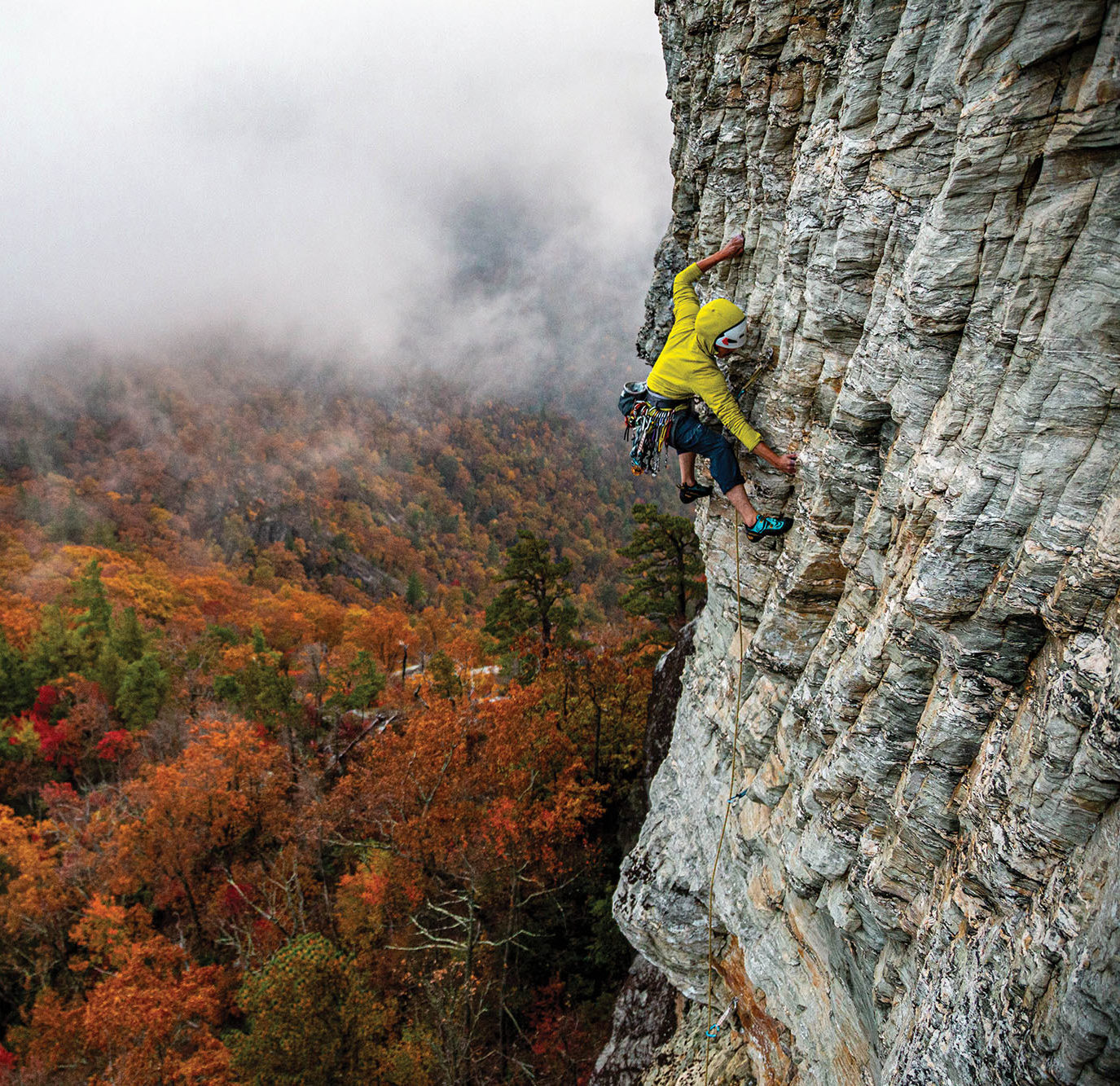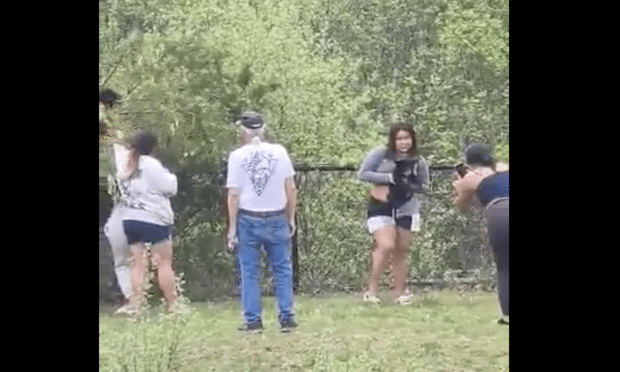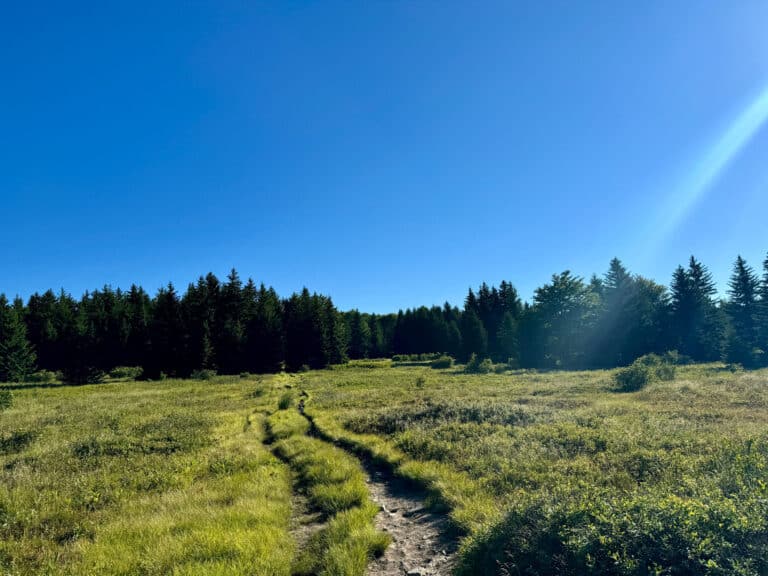Blue Ridge Athletes and Experts Discuss the Evolution of Outdoor Recreation
“Ecosports are here to stay,” then editor John Blackburn declared in the inaugural issue of Blue Ridge Outdoors. When the magazine first went to press 25 years ago, a year before I was born, the publication was focused on outdoor recreation spots around Charlottesville, Va. Since then, we’ve seen Blackburn’s statement ring true as the magazine expanded to cover the Mid-Atlantic and Southeast.
Today, outdoor recreation is a multi-billion-dollar industry, accounting for 2.2 percent of the U.S. GDP, according to the Bureau of Economic Analysis. Races have come and gone. New fastest known time records have been set. Important wilderness areas have been protected while others have been lost to development. Virginia and North Carolina created offices of outdoor recreation. And, no matter where you look in the outdoor industry, it is undeniable the impact technology and social media have had on recreation. We caught up with athletes and adventurers to find out how outdoor recreation has evolved over the last 25 years.
Growth of Trails: The A.T. and Beyond
Warren Doyle thru-hiked the Appalachian Trail for the first time in 1969. Since then, he has hiked the entirety of the famous trail 18 times while watching the rise of the outdoor adventure industry. “There used to not be much commerciality out there,” Doyle said. “It wasn’t much of an industry, and there weren’t that many jobs in the outdoors. There weren’t any hostels or shuttles. It was all about the mountain you slept on top of.”
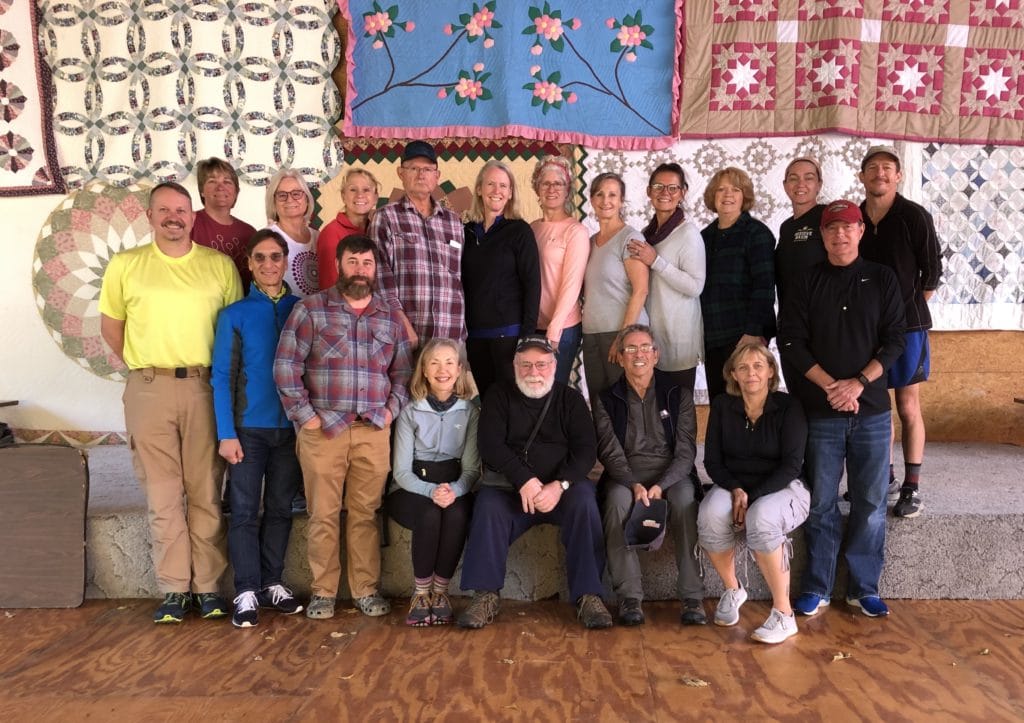
Since Doyle’s first thru-hike, lightweight has been the name of the game as gear companies compete to produce the lightest gear for outdoor enthusiasts to help keep their pack weight down. But despite the push to have the latest and greatest, Doyle, founder of the Appalachian Trail Institute, says your gear won’t ultimately get you to the end of the 2,190-mile trail. “Your mental fortitude is the thing that’s going to get you to Katahdin, not your things,” he said. “The trail has not changed. It may be a hundred miles longer than it used to be, but it hasn’t changed. What you need to go from Georgia to Maine, if that’s what you do and that’s what you want, it becomes a task. And there are universal truths to accomplishing that task. And it’s not tied into equipment.”
Although it is a beloved trail for a reason, East Coast hiking is more than the A.T. Long-distance trails like the Mountains-to-Sea Trail and Pinhoti Trail have been built up and seen an influx of visitors. Rail trails have exploded in popularity, from the C&O Canal and Virginia Creeper Trail to local multi-use greenways accessible for the whole family. There’s been a renewed interest in trails connecting communities, from 20-mile trails between towns to the East Coast Greenway connecting Florida to Maine.
With the growth in local trails that you no longer need to drive hours to reach came an increased interest in trail running. Ultrarunner and running coach Olivia Affuso experienced that infrastructure development in her local trail running community as Birmingham, Ala., built up trails close to the city. “We’ve seen a lot of growth in the trail running community in the past 10 years,” she said. “Just so many more people coming into it and the variety of races. There are lots of race series that start with a three-mile run. That opens up more opportunities for people who are maybe a little less crazy than the ultra-endurance athletes.”
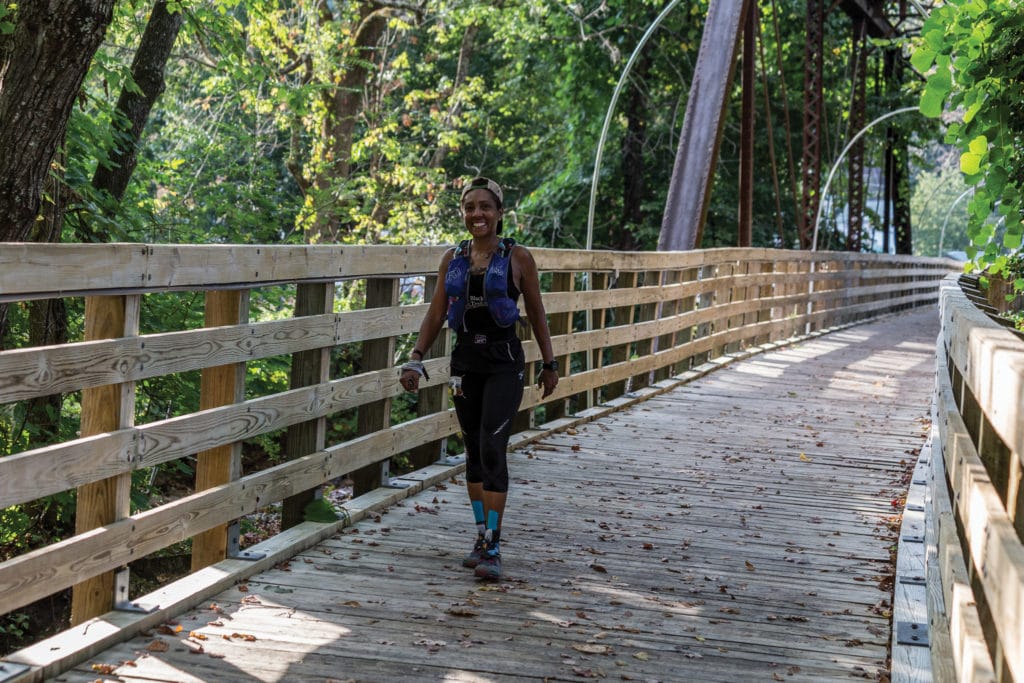
In addition to a growing number of trails, Affuso said social media has helped pave the way for more people to call themselves trail runners. “I think social media has given women and girls more opportunities to have their voices heard and their stories told,” she said. “I see it as shifting the social norms of what women, girls, and people of color are actually doing in the real world versus what may be represented in other types of media.”
As more state and local leaders see the value in building trails close to home, Affuso said communities need to think of access beyond the open space available and number of trails built. “I don’t think there’s been as much attention paid to people’s perception of safety in those spaces,” she said.
“Safety isn’t always about crime. Safety is, am I going to be okay if I go into this space by myself. That might mean one thing for a woman but something different for a person of color. Do I belong in this space and will people perceive that I belong in this space, or will they come after me because I represent a certain stereotype in their mind?”
As for where trail running is headed in the next few years, Affuso said a lot will depend on how the pandemic unfolds in the coming months. “I think some people are more leery to engage in large group activities,” she said. “Many of the trail runs that we customarily do have been canceled. We’re still in that wait and see pattern. Hopefully this pandemic will pass us by next year and 2021 will be the big year of trail running. I think even more people will come out, especially after the popularity of the virtual races.”
With trails seeing an increase in visitors during this time, local trails will be key in keeping people engaged with the outdoors and accessible for all.
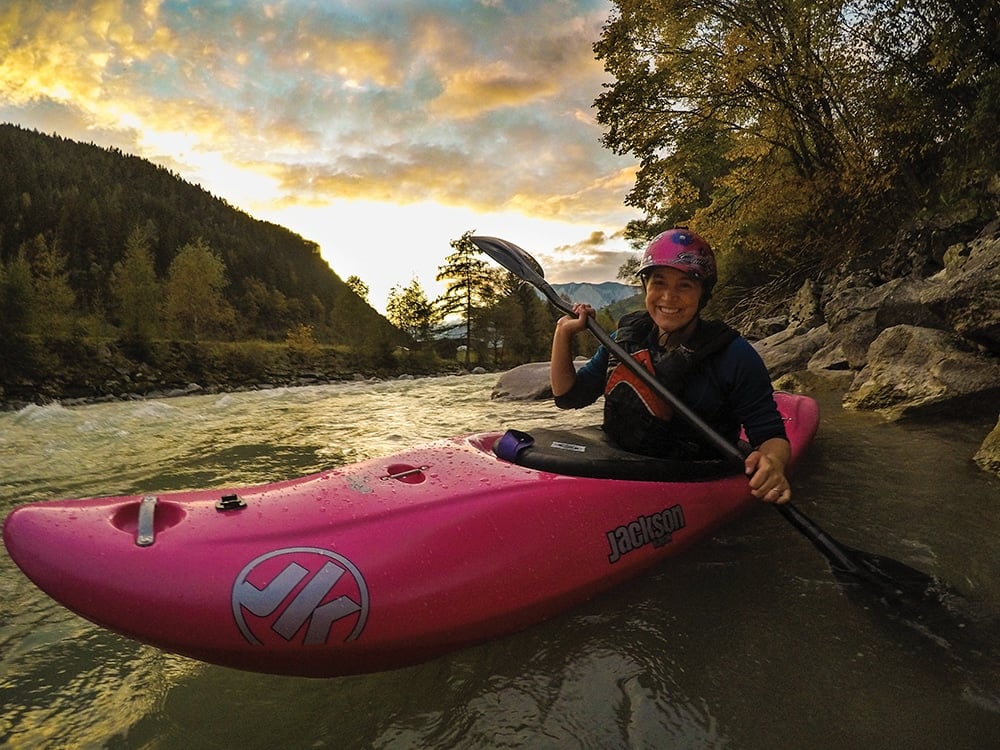
A Specialized Sport
Coming from a paddling family, whitewater kayaker Emily Jackson got her start at a young age. The two-time World Freestyle Champion and member of the U.S. Freestyle Team said paddlers today really associate with what they are doing more than ever before. “Even just saying ‘I’m a whitewater kayaker,’ when you ask most people, it’s kind of blanketing a few different things,” Jackson said. “What do you like to do in your kayak, oh freestyle kayak, oh I’m a creeker, oh I’m a river runner. With that, the people marketing and building the gear have recognized that people really like to associate themselves with a certain niche of paddlers.”
In addition to more specialized equipment, including PFDs and helmets, the comfort of the boats has changed dramatically due to new designs. As a kid, Jackson remembers paddlers putting beer koozies on their feet because they couldn’t fit into their kayak with shoes on. “A lot of respect for the paddlers of the 90s that dealt with a lot of things that we simply don’t have to deal with anymore,” Jackson said. “Being uncomfortable was a big part of it. Some people quit kayaking just due to having back pain and trouble with their feet or their legs. And that isn’t a factor anymore.”
As with other outdoor recreation activities, the internet has changed how paddlers are able to get information and get out on the water. “There are databases now just filled with all that information, particularly American Whitewater,” Jackson said. “They have the put-ins and take-outs and rapid descriptions for just about every run in the U.S. and everyone can access it. So, you don’t have to buy a guidebook per region that was written in whatever year that changes constantly.”
While it might be easier to get out on the water with all of the information online, Jackson said the damming of rivers has changed many wild whitewater runs. “Some of my favorite runs are nonexistent now,” she said. “Whole entire sections of rivers are just disappearing. I’ve noticed that more so now in the last few years than before. It could have been happening before just as much and I wasn’t aware. I would say that that has been the biggest eye opener for me as far as access to waterways. They’re all underwater.”
Looking to the future, Jackson said she wants to see the paddling community focus more on the mental and physical benefits that come from being on the water rather than just the extreme side of the sport.
“We don’t promote the bunny slope,” she said. “So, when people think about whitewater kayaking, they’re often thinking about what they saw on the Today Show of someone running a 200-foot waterfall, versus just people getting outside and having a really good time on the water.”
From coastal marshes to serene mountain lakes, paddling the Blue Ridge doesn’t have to be all about Class V whitewater.
Building Better Bikes
Sue George has been involved with just about every aspect of mountain biking since the early 80s. She competed nationally and internationally as a member of the U.S. National Cycling Team, wrote articles as an editor at CyclingNews.com, and now serves as vice president at BikeFlights.com. “If you ride a bike from 25 years ago and try to take it out on the trail now, you’re like, how did I do this?” George said. “It’s such a different experience. The suspension has changed, the shocks have changed, the geometry has changed, wheel size has changed. You can confidently go down something and know your brakes are going to work well and stop you. It’s really changed what you can ride and what you can enjoy riding over time. Things that you would have previously had to walk or hike a bike become rideable and become fun challenges.”
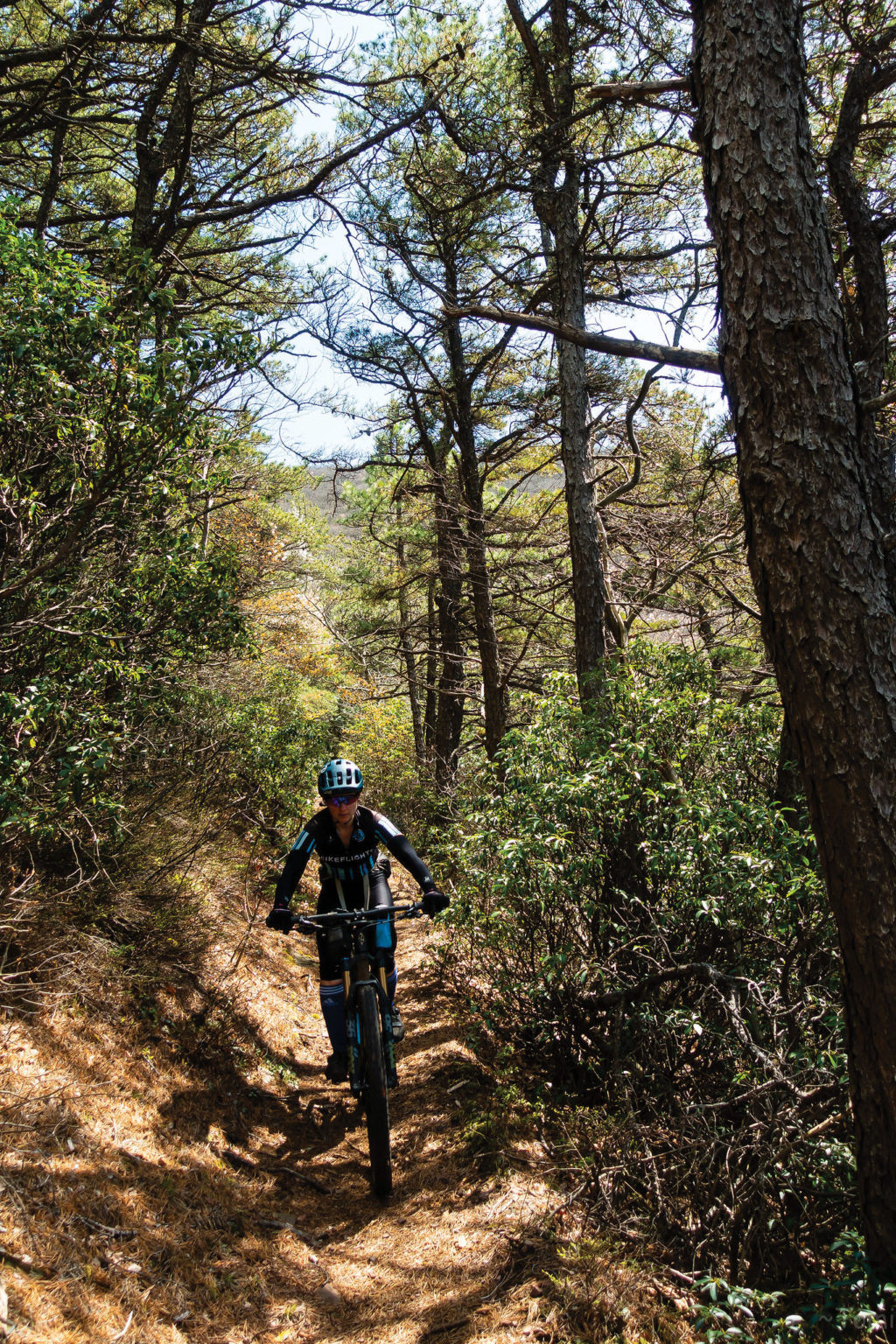
As mountain biking has emerged from a fringe sport, organizations across the region have worked to open up access to mountain bikers. “I think people overall, including government and landowners, have realized the value of having trails near where people live so they can get outside,” George said. “You see a lot of people now will look to purchase a house near public land that offers access. That’s a selling point now.” In tandem, we’ve seen the rise of professional trail builders who are making the trails more sustainable and better for riding.
The way that mountain bikers race has also evolved as bikes are built to handle different terrain. “Over time, we’ve seen styles of racing come and go,” George said. “For a period of time, 24-hour races were the thing to do. Everybody did at least one or two a year. There are not many 24-hour races left. More recently, Enduro racing has become more popular. It seems like every so many years, we get a new discipline, it becomes popular, people love it, and then it wanes. I think throughout that whole period you still have people that just go out and ride their bike in the woods. You don’t have to race to be a mountain biker.”
For the future of mountain biking, George said she sees great hope in organizations like NICA and the availability of clinics to support the next generation of riders. “You’re developing this entire new crop of people that are finding camaraderie and friendship through the experience of mountain biking at a young age,” she said. “Not all of them will stick with it indefinitely, but I feel like we have this opportunity to create more people that love riding for the rest of their life. We need fresh blood in the sport. I’m excited to see where those kids take the sport.”
See You at the Crag
In the last five years alone, Ben Wu, a guide for Fox Mountain Guides, said climbing has gone almost mainstream. “I’ve noticed a tremendous increase in the crowds at the crag and in the number of gyms nationwide, worldwide,” he said. “People are flooding the climbing industry.”
Part of that interest can be attributed to the 2020 Olympics, now rescheduled for 2021, as the first year climbing would be included as a sport. “That alone started an international increase in demand for climbing facilities,” Wu said. “Gym competitions specifically are going to be an even bigger part of the funding as far as the amount of money a country puts in their athletic system.”
Organizations like the Southeastern Climbers Coalition, Red River Gorge Climbers’ Coalition, and Carolina Climber’s Coalition are working to expand access to rock climbing and bouldering spots in the region by purchasing land or facilitating climbing agreements with other land managers to keep crags open as more climbers are wanting to get outside. Wu said the transition from gym to crag does call for some training to minimize risk. “We’ve already seen more accidents because of newcomers trying to get outside too early without the proper guidance,” he said.
“I’m hoping that this boom in the climbing industry is also going to transfer to a more widespread acceptance of guiding culture. In the U.S., there’s this mentality that as an individual you can figure all of this stuff out on your own. That mentality leads to a lot of accidents.”
The future of rock climbing and bouldering will depend on climbers maintaining access to climbing areas. Wu said he is watching areas where climbers might be shut out, especially the U.S. Forest Service’s plan for Pisgah and Nantahala national forests.
Cast Away
When Starr Nolan first got into fly fishing, it wasn’t unusual for her to be the only woman at her local Trout Unlimited meetings. “It was kind of what I was used to,” she said. Now there are a few more women in the room, and gear companies are slowly introducing clothing for women. “When I first started, you had to make do with men’s sizes,” Nolan said. “Now almost every company has a line of woman’s gear. It’s not nearly as extensive as the men’s gear. Strangely enough, it’s in these weird colors. As if women don’t seriously go fly fishing, the women’s gear has bright pink or blue on it and the men’s gear is all camo. There are these strange little suggestions within the fashion world.” Still, gear companies are getting there.

As the owner of Brookside Guides and executive director of Casting Carolinas, Nolan specializes in teaching new anglers the ways of the water. “To really be adequate at fly fishing means you’re a learner,” she said. “You want to learn a little bit more about the stream insects, how you pick a different fly, the water, the currents, and how to think like a trout. For people who are really into that learning process and knowing that every single time that you step in that water, it’s going to be different.”
In the years since she started her business, Nolan said the guiding side of the industry has taken off. “For a good number of years, there were maybe a handful of us that were in the mix,” she said. “More people got interested in fly fishing, more people decided to try to make a living guiding, and that part really blossomed. The competition is now pretty steep out there.”
Nolan sees the future of fly fishing as a much more diverse and welcoming activity. “Fly fishing has historically been a white, male sport,” she said. “I would like the fly fishing world to be open to diversity, whatever that might have to look like. As with being the single female in the room full of men, it’s been one person of color or no people of color for an equally long time. I would really like for the fly fishing world to take a look at that. How can we make this wonderful opportunity and sport available, open, and welcoming to everybody?”
Cover Photo: Ben Wu climbs Indecent Exposure on Table Rock in Linville Gorge, N.C. Photo by Natalie Sheffield
